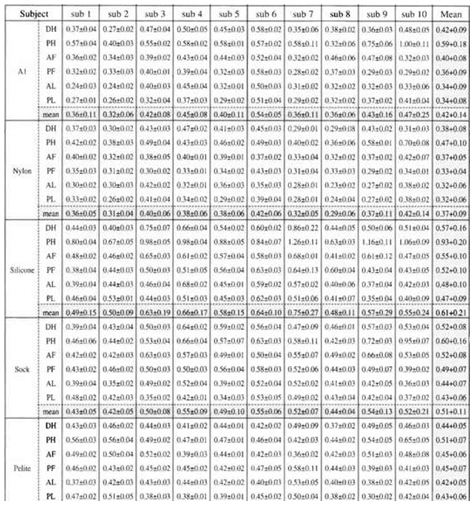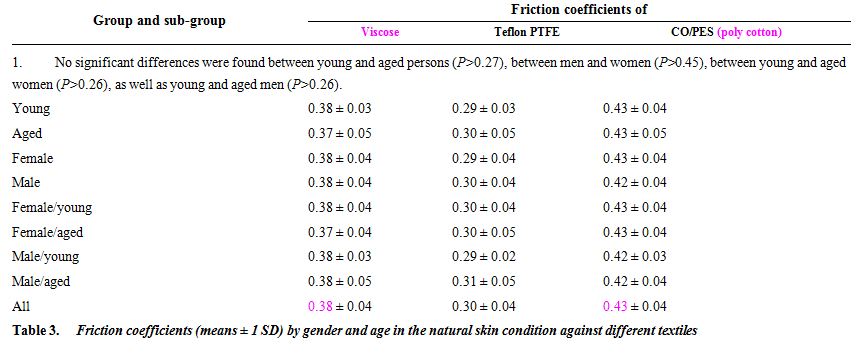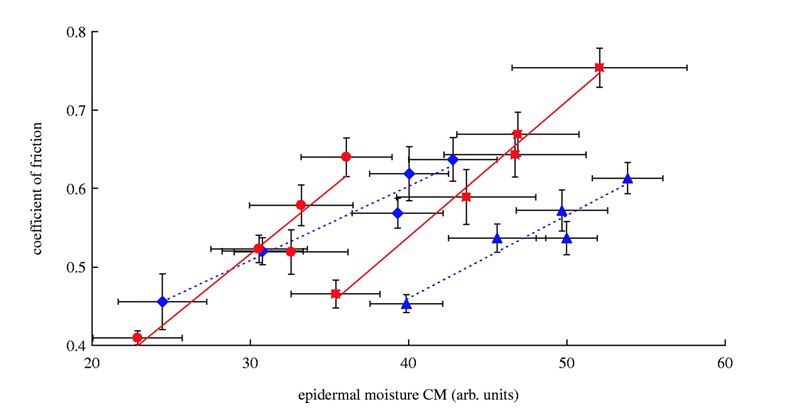The Research on the Friction Properties of Bamboo Fiber Surface
LIANG Zhao—wen,LI Jian—qiang,ZHOU Xiao-jie
Foshan Supervisionon Testing Center of Quality And Metrology Foshan Guangdong 528000,China;2 Key Laboratory of Green Processing and Functional Textile of New Textile Materials,Wuhan University of Science and Engineering ,Ministry of Education, Wuhan Hubei 430073,China
Abstract:The friction coefficient of bamboo fibre and related materials was tested in this research. The static friction coefficient of bamboo fiber was 0.30—0.41,the dynamic friction coefficient of bamboo fibre was 0.25—0.31.The friction coefficient of bamboo fibre and raime fibre was close.
Bamboo fiber and raime fibre blended products have the same characteristics, both causing less friction on sensitive skin caused by baby eczema.
Tribology of human skin and mechanical skin equivalents in contact with textiles
S. Derler, U. Schrade, L.-C. Gerhardt
Empa-Materials Science and Technology, Lerchenfeldstrasse 5, CH-9014 St. Gallen, Switzerland
Received 2 September 2006; received in revised form 23 November 2006; accepted 25 November 2006
Available online 23 May 2007: http://www.mate.tue.nl/mate/pdfs/12382.pdf
Influence of fiber-type and moisture on measured fabric-to-skin friction
P. Kenins.
Textile Research Journal. 64 (1994) 722–728.
For wool sliding on skin, Comaish and Bottoms [10] reported a friction coefficient of 0.4. Kenins[11] who investigated the friction of different wool fabrics on the forearm and the finger of subjects, found friction coefficients between 0.32 and 0.48 for light contacts on dry skin and values between 0.48 and 1.23 for wet skin. Friction coefficients in the same order of magnitude were found in the touch experiments presented here (0.27–0.71), but comparisons seem problematic because of different test conditions.
In vivo friction properties of human skin
M. Zhang, A. F. T. Mak
Prosthetics and Orthotics International, 1999, 23, 135-141
The last column is the average of all test subjects for friction tests in five places on their bodies with average and standardised force. Each score includes deviation for each test. Materials of interest are nylon and the cotton sock.

Influence of epidermal hydration on the friction of human skin against textiles
L.-C Gerhardt, V Strässle, A Lenz, N.D Spencer and S Derler
Available online: http://rsif.royalsocietypublishing.org/content/5/28/1317.full
Results
Friction experiments
The measured friction coefficients are listed in Table 3. For all fabrics, no significant difference in skin friction was found between the two investigated age groups (P>0.27, Fig. 2).

Sliding friction measurements were carried out using a quartz force plate (Model 9254, Kistler, Winterthur, Switzerland), as described recently in detail (19). The subjects were instructed to rub their dominant inner forearm in a reciprocating and uniform motion (≈20 cycles) against the textiles on the force plate. The average normal load of all subjects was (14.6 ± 1.3) N, which reflects individual normal load variations ranging from 11 to 19 N. The mean dynamic skin friction coefficient (COF) obtained from at least 15 full friction cycles was calculated by the ratio of friction force and normal force, and used for further statistical analyses. Before the friction experiments, the apparent contact area between the skin and the force plate was determined using a pressure-sensitive film (19). The applied normal loads and friction frequencies [frequency=(0.84 ± 0.23) Hz, estimated forearm stroke ≈80 mm] resulted in an average contact pressure of (4.0 ± 0.7) kPa, and mean linear sliding velocities of about 135 mm/s, representing clinically realistic contact conditions for supine persons (31).
Breathabilility according to moistness (done with hospital grade polycotton) – this graph shows that damp skin is far worse off:

Bamboo fabric's capillary action – aka wicking – means it will remove excess moisture from skin, providing breathability which also reduces the friction co-efficient on skin as shown above.
